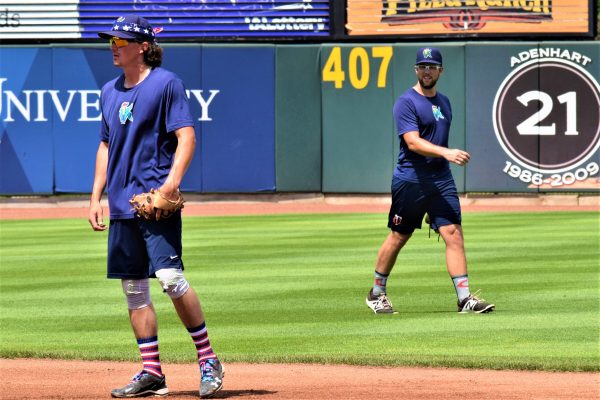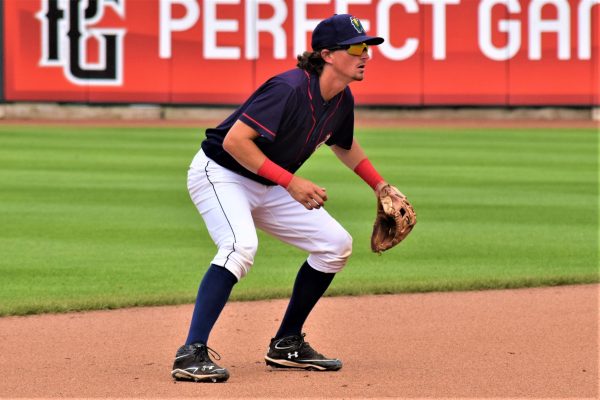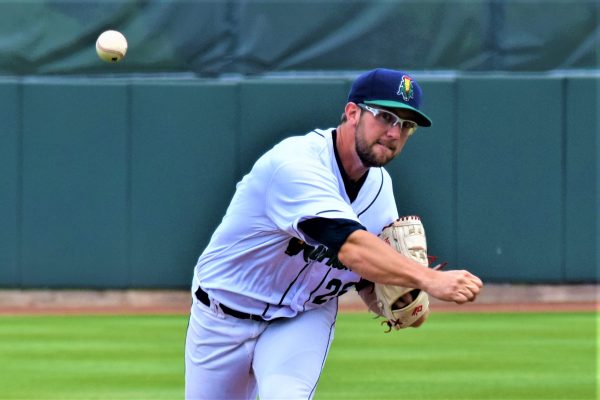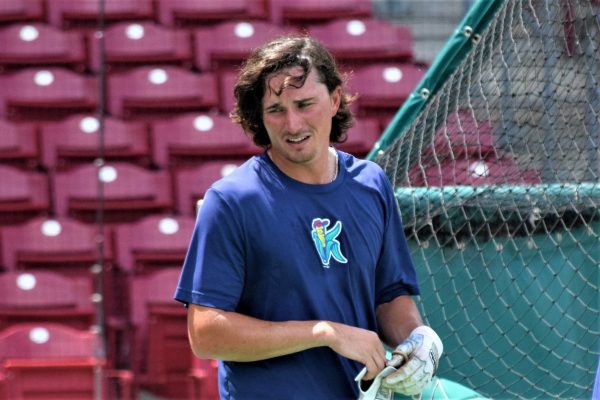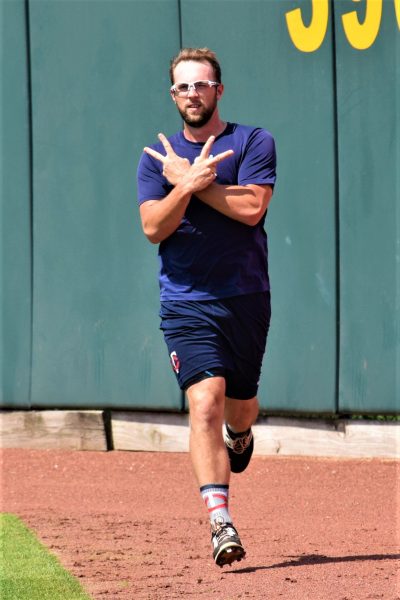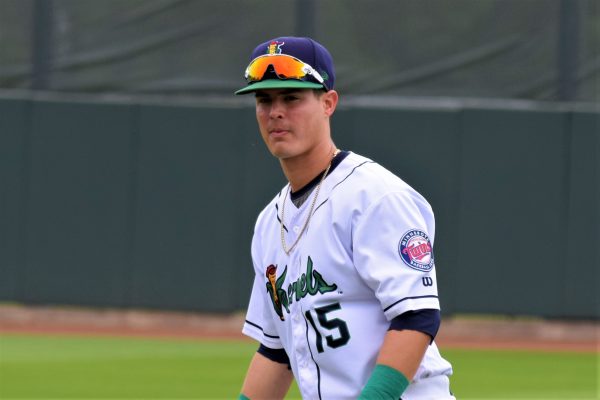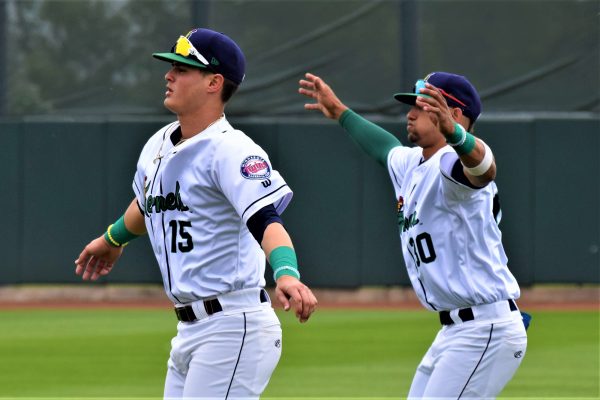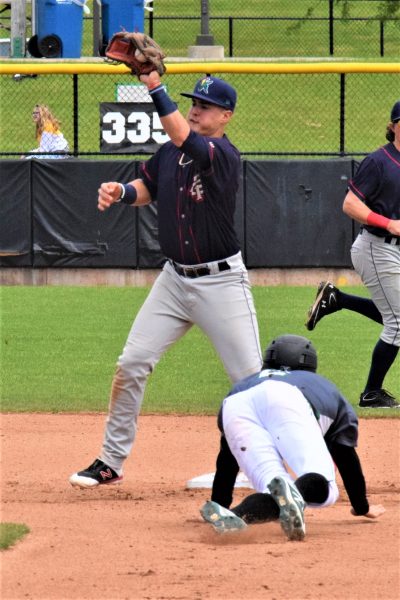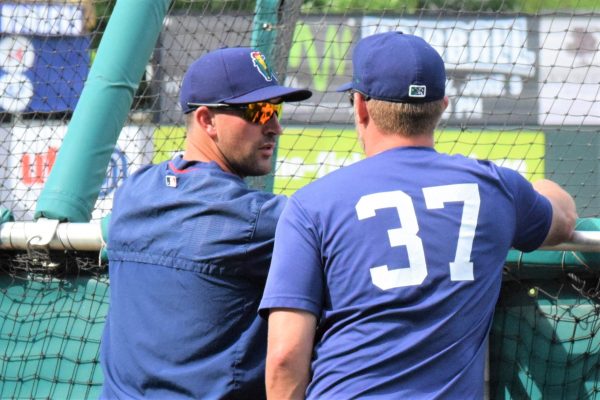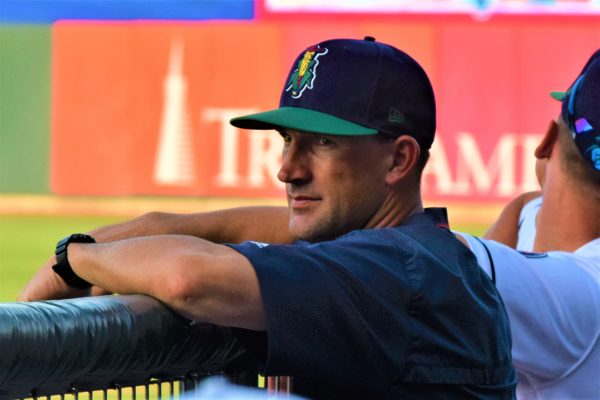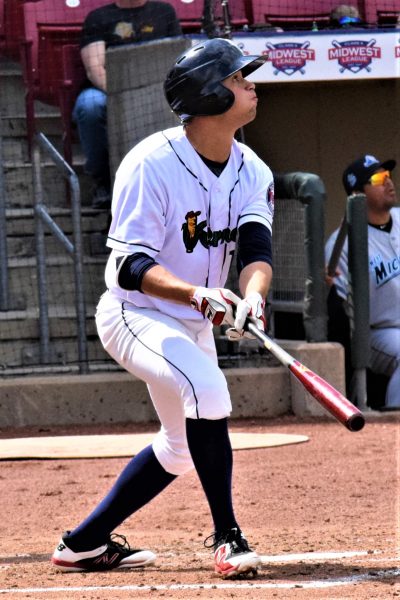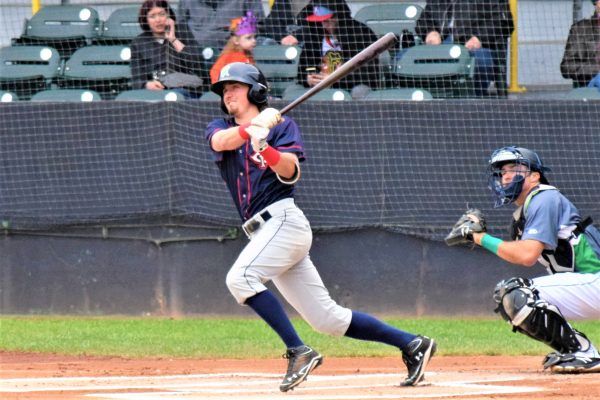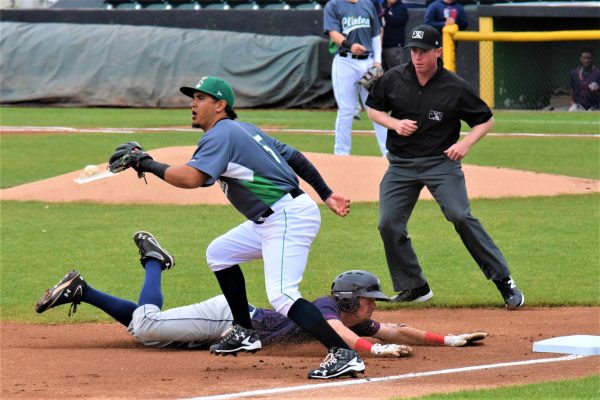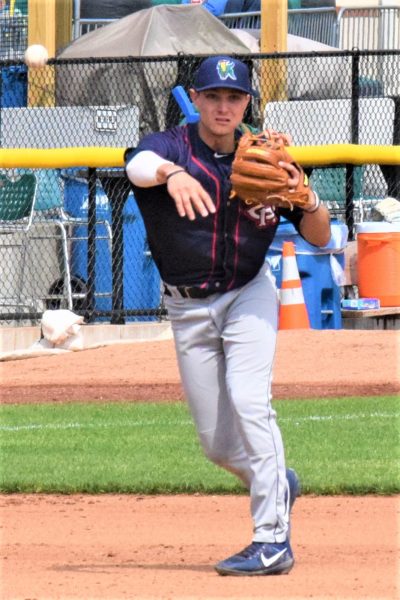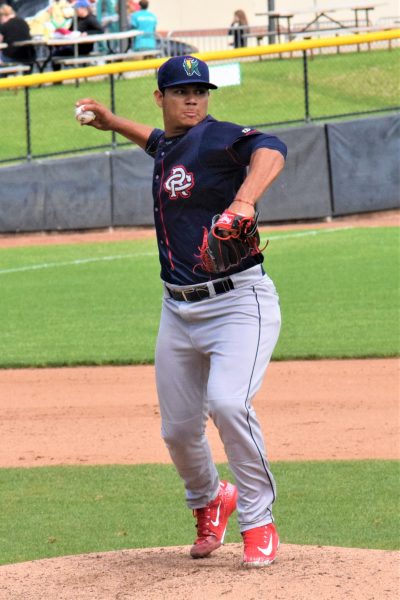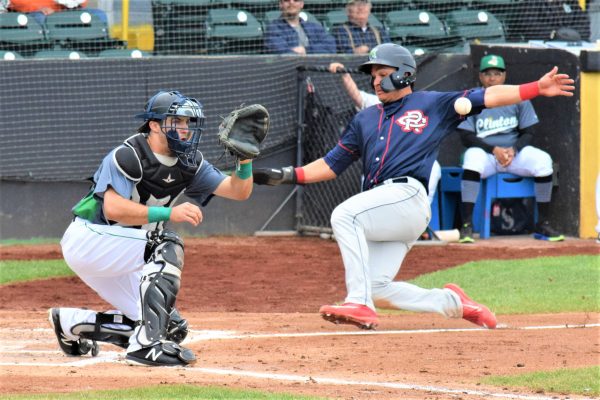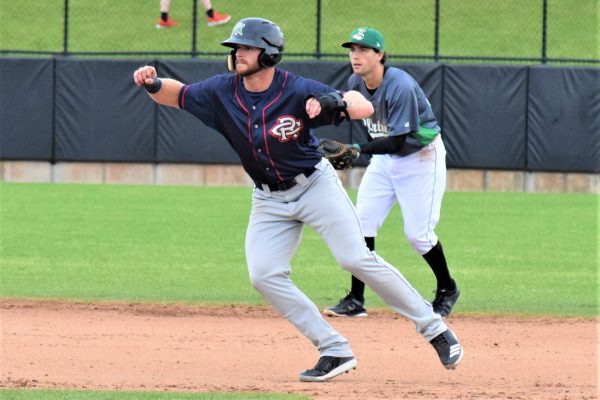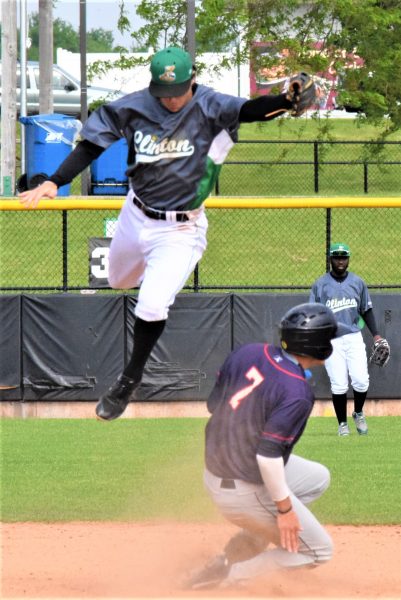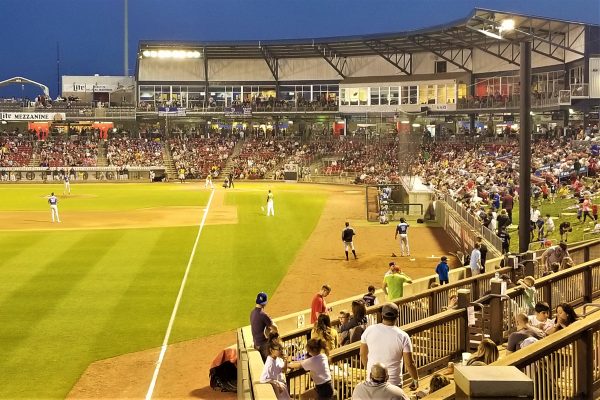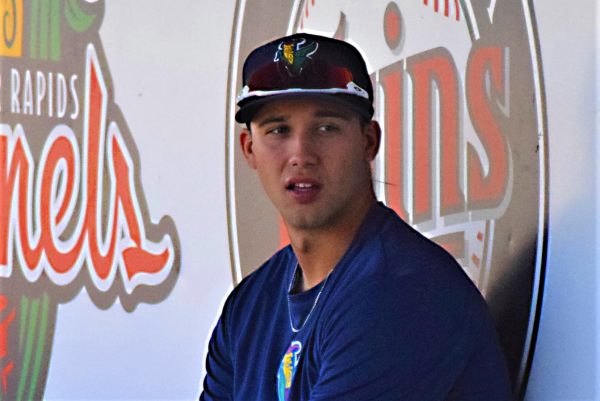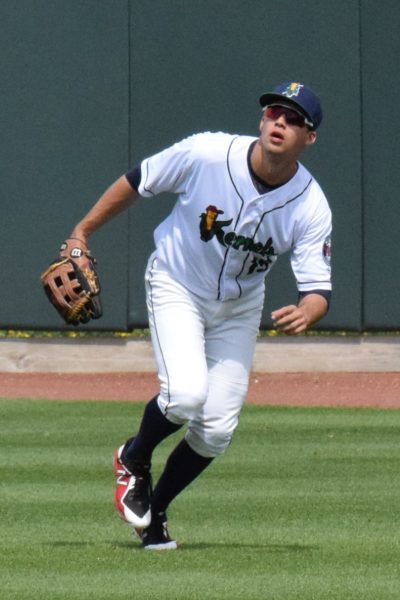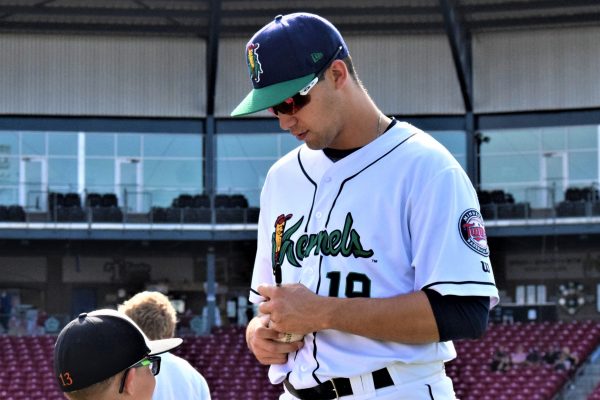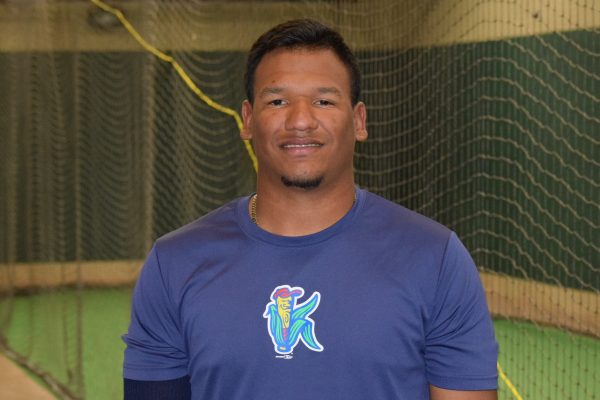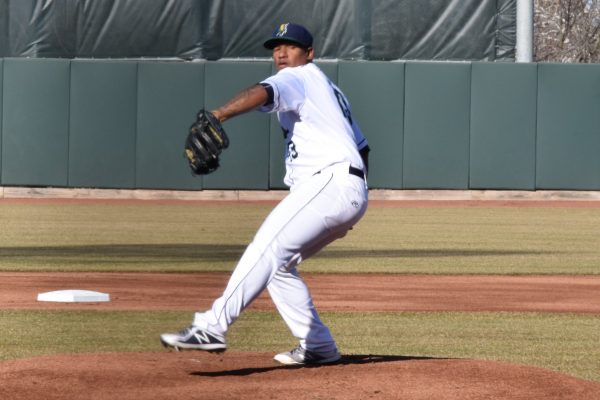Trey Cabbage says he absolutely does not hate Cedar Rapids.
He may be hitting like he hates his team’s home town, but he insists that doesn’t mean he hates the city.
“Honestly, I don’t,” he claimed, with a smile, during an interview late last week. “I want to get out of here, but not because it’s Cedar Rapids. It wouldn’t matter if it was California, North Carolina or wherever, it’s just to move up to the next level.”

But sometimes it sure seems like he’s hitting like he has something against the town he’s been playing home ballgames in since about this time a year ago.
It’s not unusual in professional baseball for players to hit a little better at home than they do on the road or even a bit better than usual in one or two opponents’ ballparks.
As Cedar Rapids Kernels manager Toby Gardenhire explains, “Sometimes you see the ball better in different ballparks, sometimes with different backdrops, just different settings.”
But Cabbage, the Twins’ 21-year old 2015 4th round draft pick, has taken things to a very unusual extreme this season.
Through Monday’s game, he’s played in 67 games for the Kernels and put up a .257/.331/.447 split and a .778 OPS. He’s also been on a roll this month, hitting .375 in his last ten games.
The overall numbers are what they are, but it’s the home/road split that’s eye-popping.
In 36 home games, he’s hit just .218, gotten on base at a .279 rate and slugged .353 for a .632 OPS. He’s hit a pair of home runs among his ten extra-base hits on Perfect Game Field at Veterans Memorial Stadium in Cedar Rapids. That includes a 3-hit game on Monday afternoon in a home series finale against Lake County that included a pair of two-baggers.
But in his 31 road games for the Kernels, he’s hit .299, reached base at a .384 clip and slugged .551, giving him a road OPS of .935. That’s 178 points higher than he’s put up at home.
Maybe he just really likes wearing grey uniform pants?
“It’s not the grey pants,” he claimed. “I guess, on the road, as soon as (batting practice) is over it’s like food – stretch – game. Here (at home games), there’s a little bit more time to sit down, so I don’t know if my body gets a little bit more lackadaisical or whatever. I go out there with the same intensity every game. I don’t know what it is.
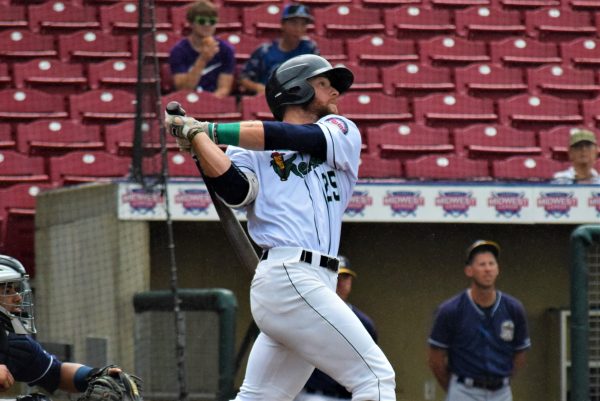
“Me and Jordan (Gore) were talking during the (MWL) All-Star break, and I said, ‘Man, I don’t know what it is, I just like playing on the road.’ I guess with people, not really booing us, but kind of heckling us a little bit more. There’s almost a little bit of a chip on your shoulder.”
Last Thursday, however, Cabbage found a solution to his home woes, at least for one night. He went 4-for-4 with a home run (just his second round tripper at home, compared to five he’s smacked on the road this season) in a 6-2 win over Ft. Wayne.
“The first 4-hit game I’ve ever had in my life,” he said the next day. “I don’t know what I did, but I’m going to try to do the same thing today as I did yesterday. I put my socks on the same way, I’ll eat the same stuff. I’m a little superstitious.”
A superstitious baseball player? Imagine that.
Cabbage claims he’s not really that superstitious, but he does have certain routines that he follows consistently.
“Like going up on deck I do the same thing,” he explained. “I do the Happy Gilmore swing, I push my helmet to my forehead, tap it twice and then fix my bill. Then I do a top hand swing drill that I’ve done with (Elizabethton Twins hitting coach) Jeff Reed in E-Town. And then from then on, it’s just timing up the pitcher, but that’s my one thing I try to do every at-bat, every time I go on deck, I do that little routine.
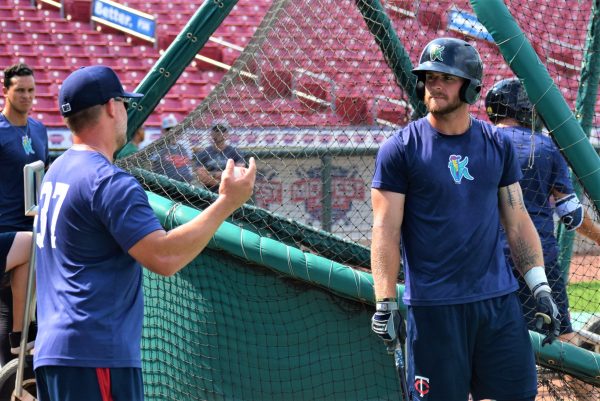
“It’s funny because I look in behind (the backstop fence) and sometimes you’ll see people like, ‘look at this guy on deck, what the heck’s he doing?’”
Maybe those fans should start heckling him like a visiting player, instead. It’s just a thought.
His manager has been seeing consistency in more than just his on-deck circle routine, however, and Gardenhire has liked what he’s seen.
“He’s been very consistent all year and that’s one of the things going into the year that we talked to him about,” Gardenhire said. “In the past, he’ll be going along and something doesn’t go right and he wants to change things, then he wants to change it again and he wants to change it again.
“At some point, you’ve got to get where you’re consistent with things so you can let it play out a little bit. That’s what we talked to him about this year, was being consistent with his approach, be consistent with the things he does. And he’s done a really good job all year of that.”
A lot has been said and written this season about the game of professional baseball becoming a contest where “three true outcomes” dominate the game. For better or worse, with the way pitchers are ramping up velocities and throwing more breaking balls, it has been becoming a game of strikeouts, walks and home runs. It’s all about fastball velocity and exit velocity (the speed at which the ball comes off the bat).
Cabbage, at 6’ 3” and just a bit over 200 pounds, may be exactly that type of player as his game evolves and his body continues to develop.
“He’s a big, strong guy and he’s got a big beard now, so he doesn’t look young, but he’s young,” his manager said. “He’s probably still got a ways to go with some things, but he’s improved a lot. He’s going to strike out some. He’s a big power hitter guy. That’s what power hitters do, strike out some. But he’s also going to light some fastballs up and that’s what he’s done this year. It’s been good to watch, it’s fun.”
When he talks hitting philosophy, Cabbage certainly sounds like a guy intent on being a power hitter.
“I don’t worry about manipulating the ball,” he said. “That’s what I was doing early in the season, that’s when I was late, swinging and missing or fouling balls off that I should be hitting.”
What Cabbage has been doing lately when he makes contact could hardly be described as manipulating the ball with his bat.
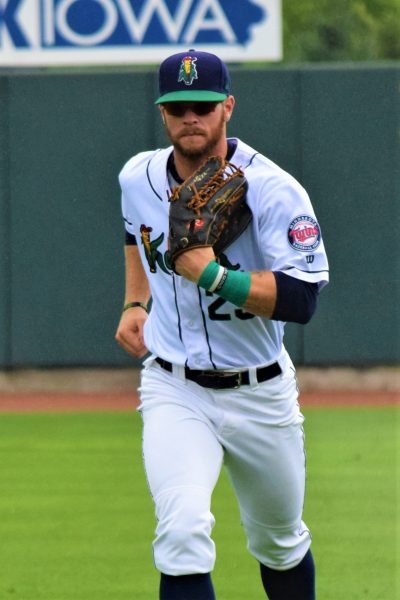
“Baseball, it doesn’t ever really even out from hard hit balls getting caught to bleeders falling in, but I would rather be out by hitting the ball hard right at somebody or somebody running it down and making a great play than saying, ‘well, I was trying to inside-out that ball because it was outside.’
“If you hit to get hits, then you’re trying to be perfect. If you’re hitting to get hits, it’s basically hitting to not make outs, which is when you start manipulating, changing the swing, changing the approach, in between pitches, during an at-bat, in between at-bats.
“I just go up there trying to make hard contact. I’d rather play with that and take my chances, than flipping balls over. Usually guys with higher exit velos and more barrels, they’re going to hit for a higher average than a guy that’s just up there trying to flip balls. Now, obviously with two strikes, you’ve got more of a defensive mindset, just trying to make contact, but if it’s an optimal count, you try to do damage.”
Cabbage has been doing his share of damage in the second half of the season and is one reason his team has been sitting at or near the top of the Midwest League’s Western Division second-half standings.
But Gardenhire also likes what he’s been seeing of Cabbage’s defense.
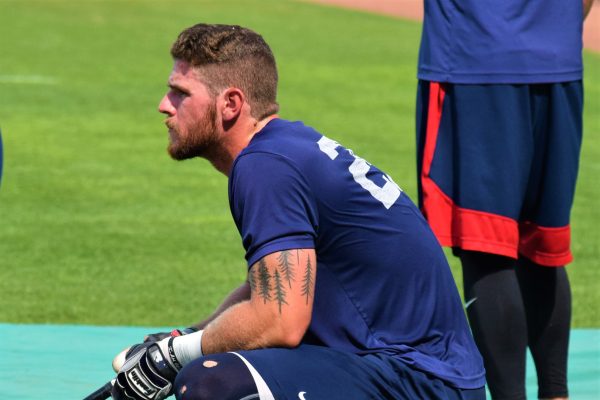
“I’ve really been pleasantly surprised with how good he is in the outfield,” the skipper said. “He’s very athletic out there. He’s got a good arm. He moves to the ball really well.
“You know, sometimes that’s tough to do for a guy that’s coming from the infield to the outfield. He was a third baseman and we put him at first some, but when we put him in the outfield, he moved around really well out there, so he can do that for sure. I’ve been impressed with that.”
Now, we just need to get him to be as impressive at home as he’s been on the road.
I still think they should make him wear grey uniform pants at home.

